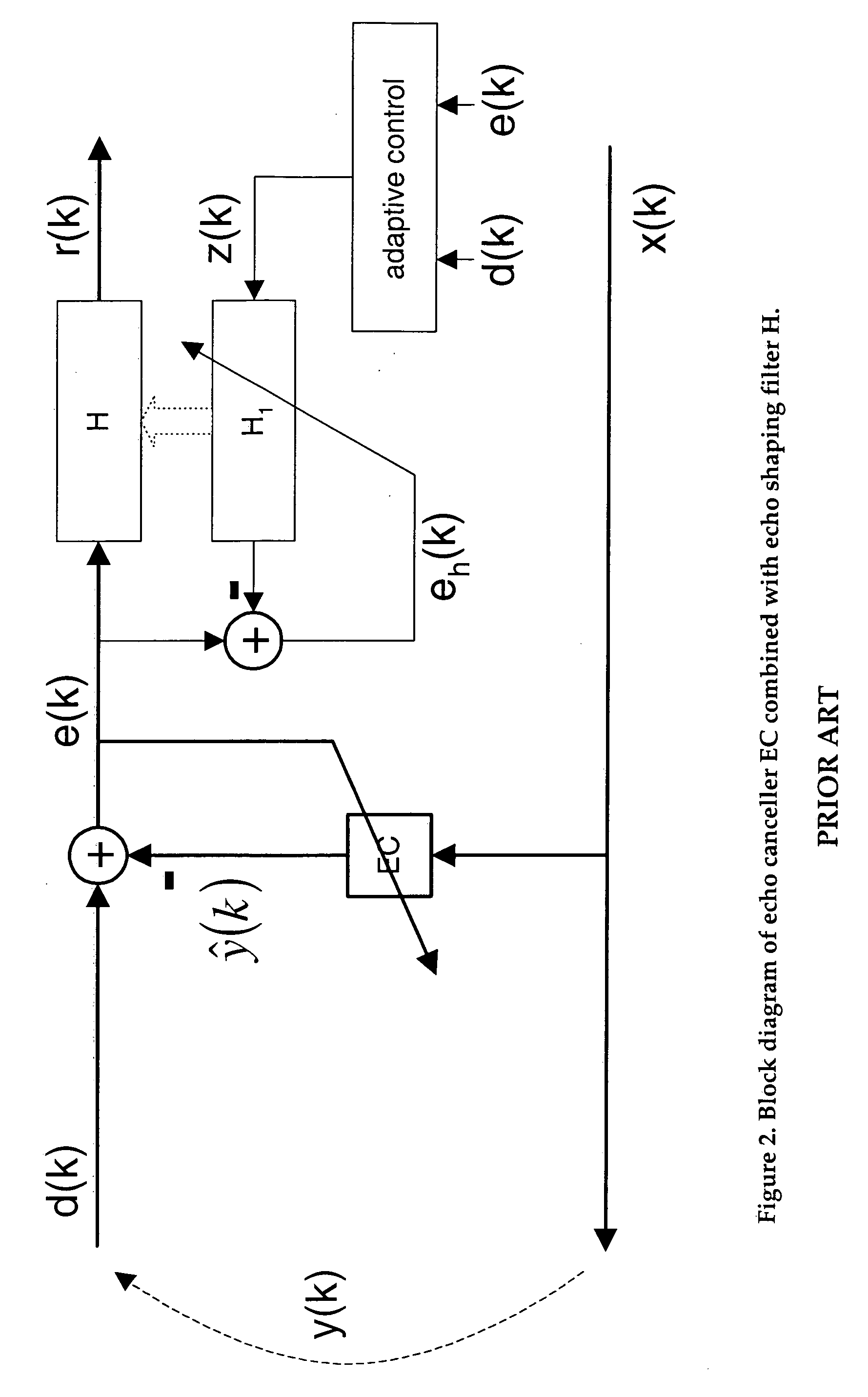Noise-level adaptive residual echo suppressor
a residual echo suppressor and noise-level technology, applied in the field of digital signal processing, can solve the problems of difficult control of vad-controlled post-processors, unsatisfactory feedback, and large computational resources, and achieve the effect of reducing the echo residu
- Summary
- Abstract
- Description
- Claims
- Application Information
AI Technical Summary
Benefits of technology
Problems solved by technology
Method used
Image
Examples
Embodiment Construction
[0029]Representative embodiments of the present invention include an improved echo control system of the type shown in FIG. 2, in which the time varying control factor α(k) in the adaptive NLMS algorithm of the background filter H1 is controlled so that both the ERLE achieved by the echo canceller EC and the low level local speech and noise contributions are explicitly taken into account. Unlike the MG2 algorithm proposed in Martin and Gustafsson, the adaptation of the residual echo suppressing filter is governed both by a noise-level adaptive steering mechanism and by a data non-linearity.
[0030]One advantage of adaptation to the noise level is that it allows the residual echo suppressing filter to be used in conditions with a high noise level. Suppression of residual echo under these conditions would normally give rise to annoying noise modulation artefacts, hence necessitating the operation of a Comfort Noise Generator (CNG) at the output of the residual echo suppressing filter. T...
PUM
 Login to View More
Login to View More Abstract
Description
Claims
Application Information
 Login to View More
Login to View More - R&D
- Intellectual Property
- Life Sciences
- Materials
- Tech Scout
- Unparalleled Data Quality
- Higher Quality Content
- 60% Fewer Hallucinations
Browse by: Latest US Patents, China's latest patents, Technical Efficacy Thesaurus, Application Domain, Technology Topic, Popular Technical Reports.
© 2025 PatSnap. All rights reserved.Legal|Privacy policy|Modern Slavery Act Transparency Statement|Sitemap|About US| Contact US: help@patsnap.com



